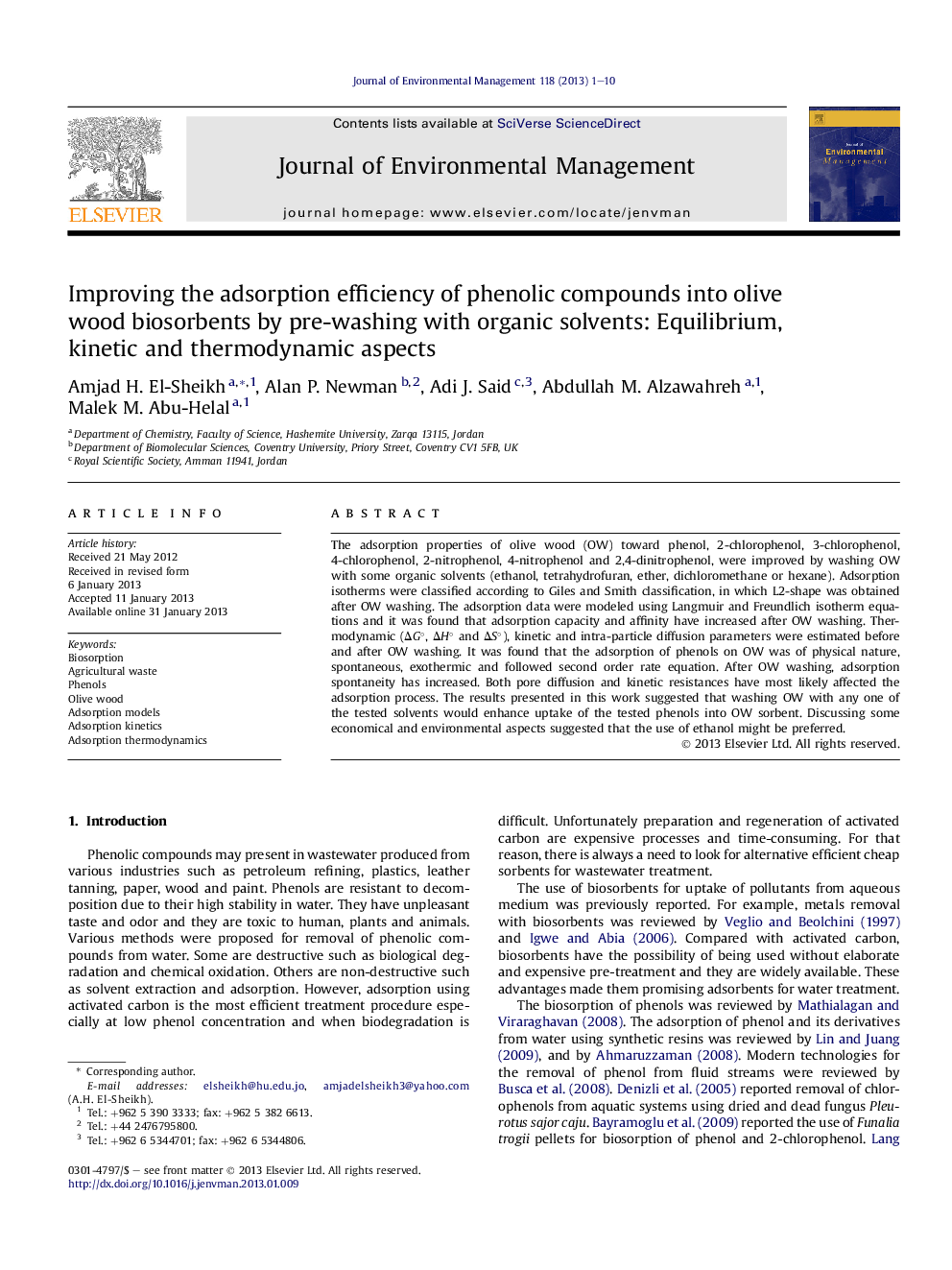| Article ID | Journal | Published Year | Pages | File Type |
|---|---|---|---|---|
| 1056451 | Journal of Environmental Management | 2013 | 10 Pages |
The adsorption properties of olive wood (OW) toward phenol, 2-chlorophenol, 3-chlorophenol, 4-chlorophenol, 2-nitrophenol, 4-nitrophenol and 2,4-dinitrophenol, were improved by washing OW with some organic solvents (ethanol, tetrahydrofuran, ether, dichloromethane or hexane). Adsorption isotherms were classified according to Giles and Smith classification, in which L2-shape was obtained after OW washing. The adsorption data were modeled using Langmuir and Freundlich isotherm equations and it was found that adsorption capacity and affinity have increased after OW washing. Thermodynamic (ΔG°, ΔH° and ΔS°), kinetic and intra-particle diffusion parameters were estimated before and after OW washing. It was found that the adsorption of phenols on OW was of physical nature, spontaneous, exothermic and followed second order rate equation. After OW washing, adsorption spontaneity has increased. Both pore diffusion and kinetic resistances have most likely affected the adsorption process. The results presented in this work suggested that washing OW with any one of the tested solvents would enhance uptake of the tested phenols into OW sorbent. Discussing some economical and environmental aspects suggested that the use of ethanol might be preferred.
► Washing olive wood with organic solvents affected adsorption behavior toward phenols. ► Washing olive wood increased adsorption capacity, favorability and spontaneity. ► Adsorption thermodynamics and kinetics were affected after olive wood washing. ► Adsorption was of physical nature and pore diffusion was not the only rate-limiting step.
